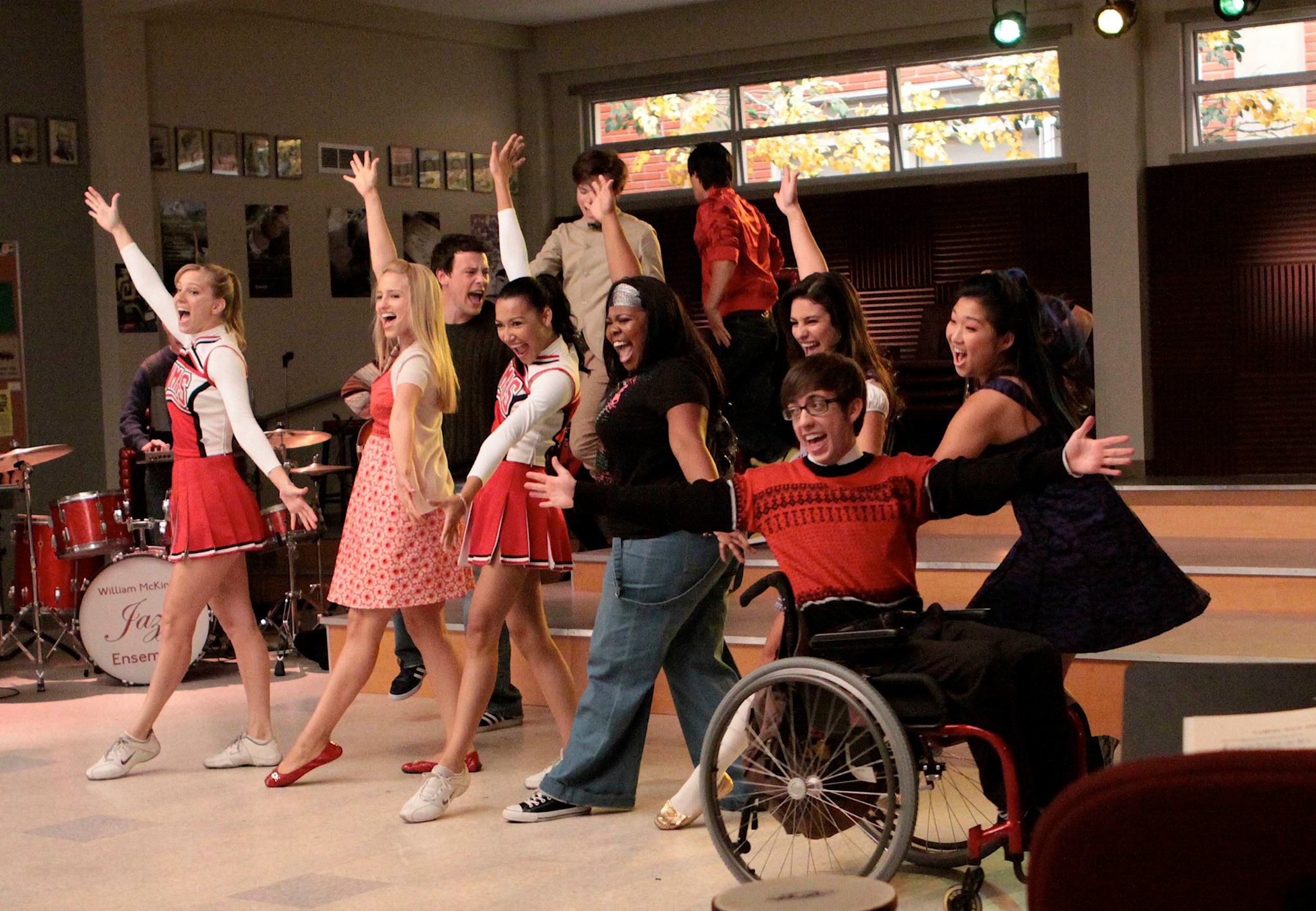
TV Editor Josie Scott-Taylor discusses Glee, wondering how it can simultaneously be so outlandish and so addictive
It seems impossible that a show could manage to cover almost every problem that could possibly occur in a teenager’s life in just six seasons, but Glee is not a show that shies away from simplicity and straightforward storylines. Not only does it cover a wide variety of issues, from teen pregnancy to divorce, it also manages to do an embarrassingly bad job of handling the majority of these delicate storylines with any real care – all while the characters sing and dance throughout every single episode. And that is what you missed on Glee!
Following a group of misfit high schoolers attempting to navigate the murky waters of teenage sex, love and friendships (almost exclusively using the power of song, obviously), Glee is a show that had a huge role in our pop culture when it was playing on TV, and somehow has managed to maintain its legacy despite the last episode airing over five years ago. The question is, why is a show that is so cringeworthy and full of bonkers plotlines so addictive to watch?
“Why is a show that is so cringeworthy and full of bonkers plotlines so addictive to watch?
I would be telling a huge lie if I claimed I was hate-watching Glee. Despite missing out on its original popularity, the dramedy has found its way into my life over a decade after it first graced our screens back in 2009, and I am currently watching it for the second time. Clearly, there must be something worth watching if I am willing to sit through the entirety of the six seasons not once, but twice (although perhaps I am just a fan of trashy teen TV – see my Riverdale Season 5 review here). However, what the show actually does a fantastic job of is developing relationships and friendships between unlikely candidates, creating a found-family atmosphere that warms the heart. The school bullies, jocks and cool kids are not just written as villains, but are in fact nuanced characters who develop slowly over the seasons, eventually even becoming friends with those they originally tormented.
“What the show actually does a fantastic job of is developing relationships and friendships between unlikely candidates
Although diva-and-Barbara-Streisand-wannabe Rachel Berry (Lea Michele) is definitely the star of the show, she is certainly not the only character who steals the spotlight. Notable favourites include Santana Lopez (played by the late Naya Rivera), whose relationship with her best-friend-turned-girlfriend Brittany S. Pierce (yes, that is supposed to sound like Britney Spears, and two entire episodes were dedicated to that), played by Heather Morris, was one of the standout plotlines of Glee for many people, even inspiring young members of the LGBTQ+ community to accept and love themselves. Watching Glee means you get to watch Finn (Cory Monteith) learning that singing does not make him less of a man, Kurt (Chris Colfer) coming to terms with his sexuality, and Sue Sylvester (Jane Lynch) mercilessly bullying anyone in her line of sight.
At the heart of Glee (aside from the relentless singing) is the struggle of fitting in, and the relief that comes with finally finding your people. This batch of outcasts definitely do not seem compatible on paper, but their love of music and desire to find a place in the world brings them together, and creates what actually can be a touching and tender show.
Want more from Redbrick TV?
Review: Sex Education – Season Three

Comments